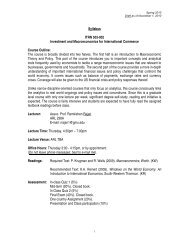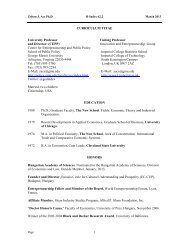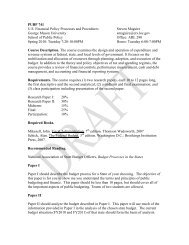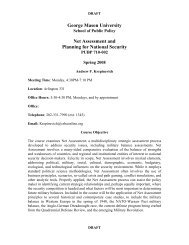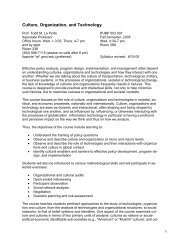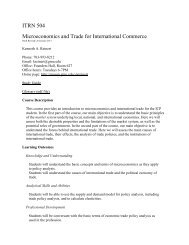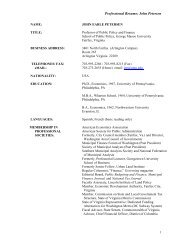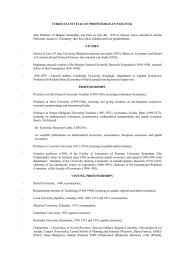Coordinating critical transportation infrastructure vulnerability
Coordinating critical transportation infrastructure vulnerability
Coordinating critical transportation infrastructure vulnerability
You also want an ePaper? Increase the reach of your titles
YUMPU automatically turns print PDFs into web optimized ePapers that Google loves.
In Table 6.2, sample weightings are provided to help differentiate between the value of each DHS<br />
“major initiative”. Weightings are an important, although subjective, aspect, as they enable each<br />
“major initiative” to be distinguished from the others based on importance to the organization. In<br />
Table 6.2, the key areas from the President’s FY03 budget have been assigned a weight twice that of<br />
the “major initiatives” that were not highlighted in the FY03 budget. Likewise, the aspects given<br />
priority in the President’s FY04 budget have been assigned a weight three times that of the “major<br />
initiatives” that were not highlighted in the FY03 budget. It is important to note that no analysis has<br />
been conducted to determine these weightings; the study team is using these weights for illustrative<br />
purposes only. Representatives within the impacted organizations should determine the appropriate<br />
weightings.<br />
In Table 6.2, “Project 1” represents improved information technology (IT) security, which explains<br />
the higher scoring for the communication and collaboration aspects, and the lower scoring for the<br />
nuclear and chemical detection aspects. “Project 2” represents a sensor program, which explains the<br />
higher scoring for the nuclear and chemical detection aspects, and the lower scoring for the<br />
communication and collaboration aspects. “Project 3” represents an emergency response training<br />
initiative, which explains the higher scoring for the preparedness aspects, and the lower scoring for<br />
the nuclear and chemical detection aspects.<br />
Goals Achievement Methodology Sample Results<br />
This section uses the sample data and weightings from the previous section and computes each<br />
project’s result when its score is multiplied by the respective weighting. For the DHS “major<br />
initiatives” where the weighting was a “1”, the scores from Table 6.2 have been carried forward as<br />
the resultant score. However, when the DHS “major initiatives” were weighted with a “2” or a “3”,<br />
the scores from Table 6.2 have been multiplied by a “2” or a “3”, respectively, which doubles or<br />
triples the importance of scoring higher against those “major initiatives”.<br />
Table 6.3 illustrates the matrix with the resultant scores for the three projects labeled “Project 1”,<br />
“Project 2”, and “Project 3”.<br />
PUBP 710/722 Page 37 of 60<br />
WMATA Case Study June 5, 2003



